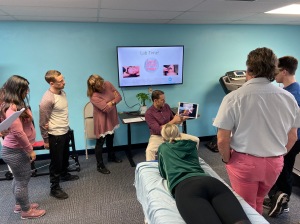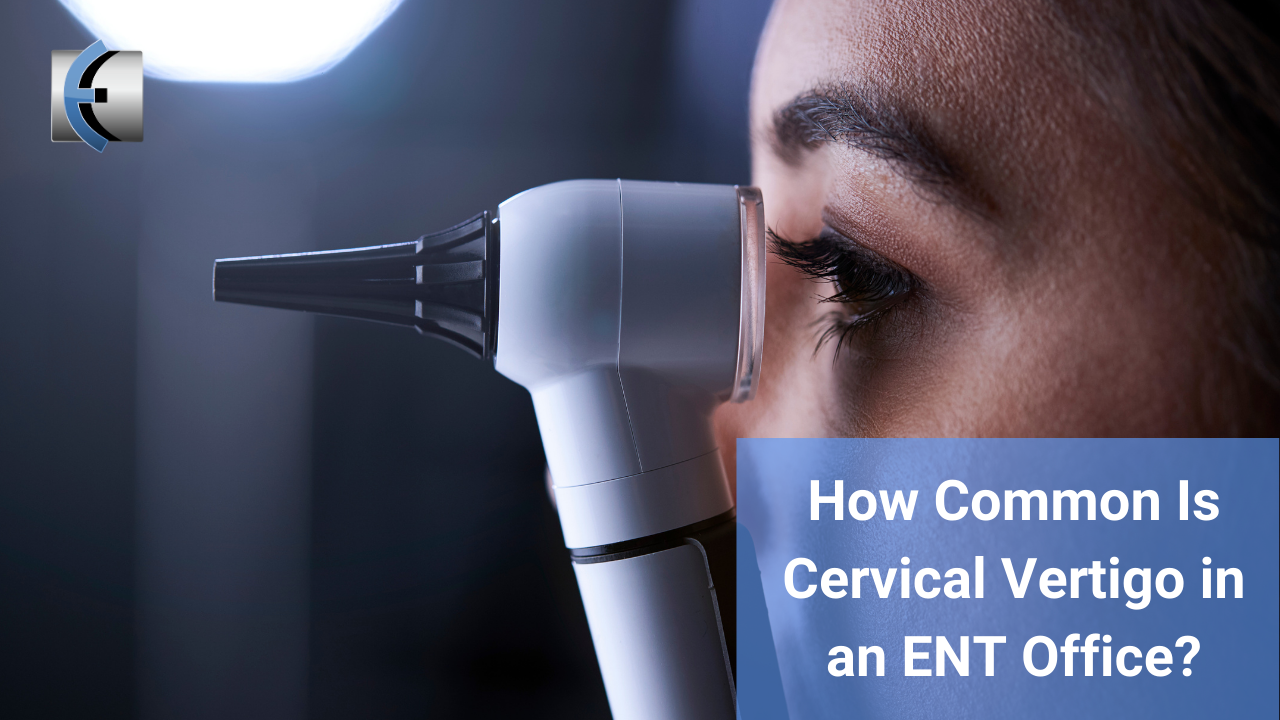The prevalence of Cervical Vertigo can depend on many factors. One of the major factors that determine prevalence is if a study looks at this diagnosis as a single or double entity.
This basically differentiates if the origin of dizziness is
Single entity: solely from cervical origin
Or if the origin is a double entity — meaning the cervical spine is a component of the symptoms but the patient also has dysfunction of the peripheral (i.e. BPPV) or central (i.e. concussion) system.
Read a previous blog that we wrote in this topic here and specifically for concussion here.
We also find that the prevalence of Cervical Vertigo is different between different professions. What do we mean by this? Simply put…if you are a rehabilitation professional (i.e. osteopath, chiropractor, physical therapist), then you have the capability and skills to intervene to the cervical spine more than say an allopathic medical provider (i.e. family physician, ENT, neurologist).
We have written about this topic in a Chiropractic office in the past. You can find the blog here.
Therefore, this takes us to the title of this post:
How common is cervical vertigo in an ENT office?
To answer this, we refer to a 2019 retrospective review of a private ENT office by Polaczkiewicz L & Olszewski J analyzed the most common causes leading to dizziness, vertigo and balance. Here are the individual diagnosis results from highest to lowest percentage:
35.86% = vestibular disorder
18.9% = benign paroxysmal positional vertigo (BPPV)
16.12% = mixed vertigo
5.42% = cervical vertigo
5.1% = Méniére disease and its suspicion
3.78% = vertigo and dizziness of central origin
2.8% = vascular vertigo
2.3% = vestibular neuritis
1.32% = post-traumatic dizziness
0.16% = cerebellopontine angle tumors
For the purpose of this blog and our interest in Cervical Vertigo, you will find from the bolded percentage above that these authors found that Cervical Vertigo is top 4 diagnosis over the 6 period span in their medical review.

5.4% is much less than the 25% that Vindengi et al 2019 found in the Chiropractic field via online survey but makes sense right. If someone was having more neck pain and disturbances, wouldn’t they seek out manual medicine vs allopathic medicine?
This percentage is slightly lower than the 8-10% of general prevalence of single entity of Cervical Vertigo that is found across the field but this is one private practice and not general practitioner office, but ENT.
Nevertheless, this is an interesting piece of literature to bring to your local ENT professionals as if they do find cervical origin, wouldn’t they want someone who is trained in treating this to help their patient?
You can learn more about the screening and treatment process of Cervicogenic Dizzinesss through Integrative Clinical Concepts, where the authors (husband–a manual therapist a wife—a vestibular specialist), teach a very unique course combining both the theory and practice of vestibular and manual principles in their 2-day course. Pertinent to this blog post, the 2nd day includes the “Physio Blend”, a multi-faceted physiotherapist approach to the management of Cervicogenic Dizziness, which includes treatments of the articular and non-articular system of manual therapy and the most updated sensorimotor exercise regimen.
If you would like to host a course for your staff (either a vestibular, neuro, sports or ortho clinic), please do not hesitate to contact me at harrisonvaughanpt@gmail.com for more information.
AUTHORS
Harrison N. Vaughan, PT, DPT, OCS, Dip. Osteopracic, FAAOMPT
Instructor: Cervicogenic Dizziness for Integrative Clinical Concepts
Danielle N. Vaughan, PT, DPT, Vestibular Specialist
Instructor: Cervicogenic Dizziness for Integrative Clinical Concepts
- NEW - Online Discussion Group
- Live cases
- webinars
- lecture
- Live Q&A
- over 600 videos - hundreds of techniques and more!
- Check out MMT Insiders

















Post a Comment
Post a Comment